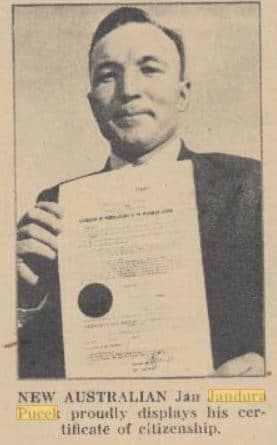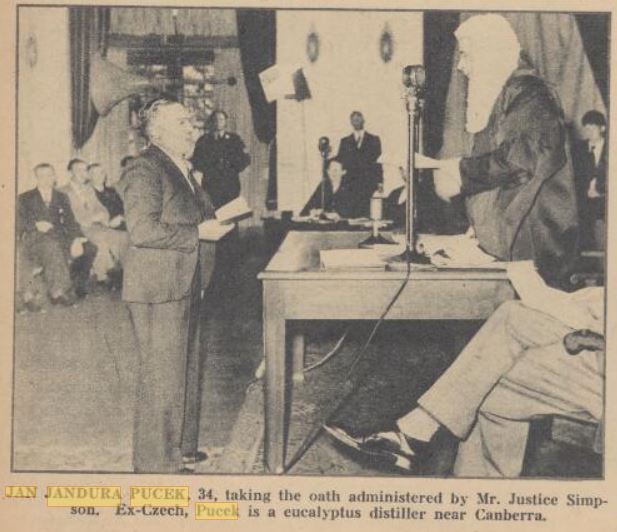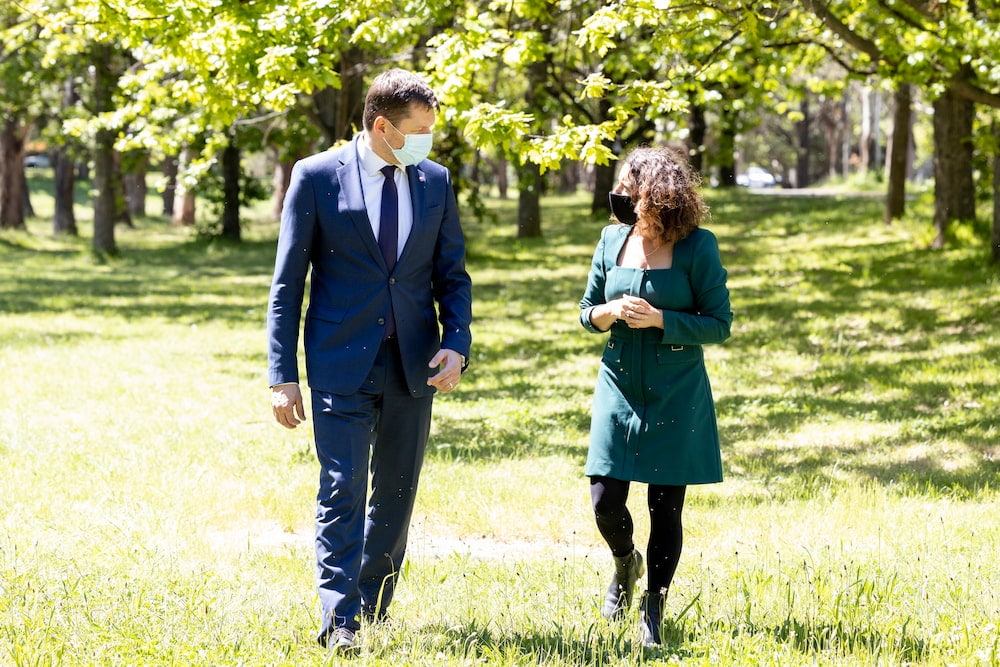In 1949, Jan Jandura Pucek, a Slovak immigrant to Canberra, became the first naturalised Australian. Jandura Park in O’Connor is named after him, but few know his story. That will change next year.
The Embassy of the Slovak Republic has received a $5,450 heritage grant from the ACT Government to establish a Canberra Tracks sign in April. (At the moment, there is only a small sign.)

“In a place like Canberra where most of us are migrants, to find out who that first person was is an important story to tell,” said Rebecca Vassarotti, ACT Minister for Heritage.
Using augmented reality, visitors will be able to watch a historic video of Jandura receiving his citizenship on their devices, the Slovak ambassador to Australia, H.E. Tomáš Ferko explained.
Jan Jandura Pucek was an ordinary, hard-working man from the small village of Habovka, Mr Ferko said. He left what was then Czechoslovakia in 1939, and moved to Australia, to earn money to help his family. He settled in Tidbinbilla, and worked at the eucalyptus oil distillery there. (Tidbinbilla did not become a nature reserve until 1962.)
In February 1949, in a ceremony at the Albert Hall, Jandura became the first person born outside the Commonwealth to become an Australian citizen – “an important milestone in our history,” said Arthur Calwell, the then-Minister for Immigration.
Six other men – all Europeans – were also naturalised that day. Together, these were the first “aliens” naturalised under the Australian Nationality Citizenship Act, which came into effect a week before, on Australia Day. (You can hear Jandura receive his citizenship here, thanks to the ABC and the National Archives of Australia.)
Jandura had expected to be in Australia only for a couple of years – but when World War II broke out, he was stuck here, and lost contact with his family. He did not see his wife for 10 years. When the Communists took power in 1949, she set out to Australia. In an astonishing coincidence, she recognised her husband’s photograph in a newspaper aboard the ship. The couple were soon reunited. They are survived by a son, who lives in Sydney.
Jandura’s story was inspirational, Mr Ferko said; it symbolised that the success of Australia was partly based upon migration. For his part, Mr Ferko was delighted when he came to Canberra two years ago to discover a park, “this beautiful green spot”, was named after a fellow Slovak.
“We started to think how to reconnect this fact to the modern history of Australia, to the heritage that he brought here and connected his country of origin, Czechoslovakia (today Slovakia), with Australia.”

A public information event will be held next year, probably as part of the Heritage Festival in April. Students at the University of Canberra and at the Slovak University of Agriculture, in Nitra, will work together to design ways to bring the park to life.
Today, an estimated 15,000 Slovaks live in Australia, a few dozen in Canberra. The biggest communities, Mr Ferko said, are in Sydney and Melbourne; many came after 1968 (the Prague Spring) and 1989 (when borders to the West opened).
Seventeen other projects have also received Heritage Grants, totalling $387,000, Ms Vassarotti said.
They include telling Ngunnawal night stories at Mulligan’s Flat, digitising stories of early pioneers, conserving historic buildings (including the Cuppacumbalong Homestead), putting the Hall School Museum online, and maintaining the Albert Hall’s historic organ.
The Heritage Grants, Ms Vassarotti said, tell the stories Canberrans don’t normally hear about the city’s secret history, showcase its diversity, and reveal connections that we may not know in our everyday life.
“As people understand their local suburbs and the city they live in more, they will value it more … and start to create their own stories as well.”



